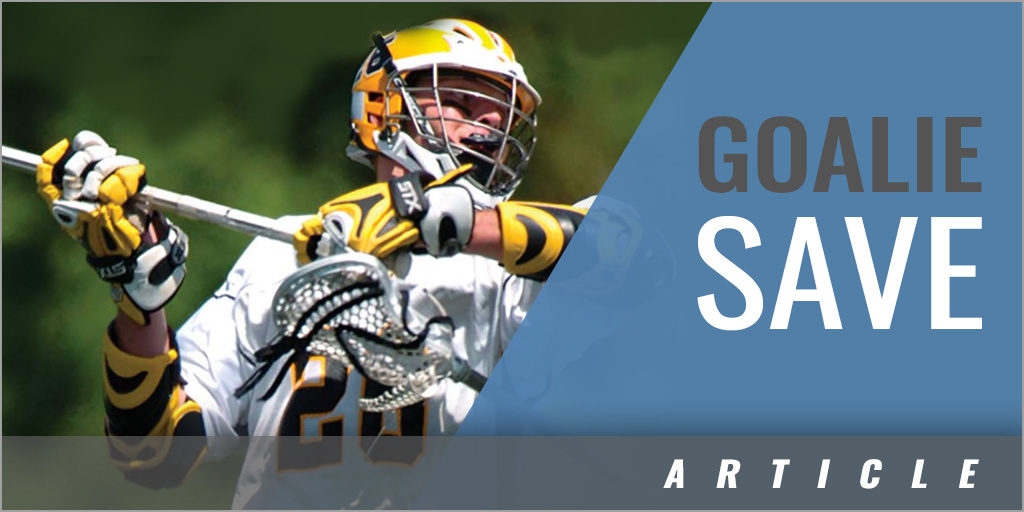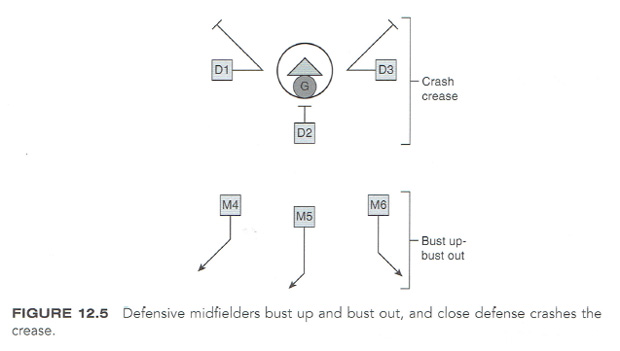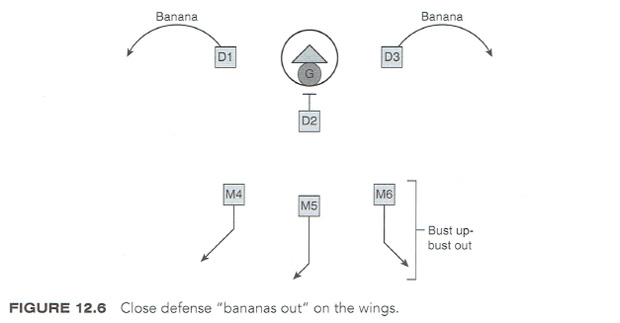|
By: Don Zimmerman and Peter England Originally Published in: Men's Lacrosse Provided by: Human Kinetics Goalie Save When the opposing team takes a shot on goal, the goalkeeper's job is to prevent the goal. If the goalie makes a save and yells, "Break," the entire defense will execute a breakout pattern, spreading out and away from the goal (this is called in bounds clearing). The defensive midfielders need to "bust up and bust out," cutting upfield and spreading the field to provide an upfield outlet pass. They need to bust upfield to separate themselves from their defender. By executing a quick burst, the midfielder gets a head start on his defender. This gives the midfielder a cushion and makes it easier for the goalie to see him. Having a cushion also allows the midfielder to slow down and gather himself to handle the pass if necessary. The midfielders want to be in a position where they feel comfortable catching the ball. Some teams will have the close defense crash the crease to minimize any rebound opportunities for the opposing team (see figure 12.5). On goalie possession, the two wing defenders will cut behind the GLE and provide a safety valve for an outlet pass. Other teams will have one defender protect the crease, and the other two defenders will "banana" out along the GLE for an outlet pass (see figure 12.6).
The goalkeeper has three primary looks once he gains possession of the ball after the shot. The goalie's first look is upfield where the shot came from. When the other team takes a shot, the midfielder covering the ball tries to get a piece of the shooter and then starts to release and get up the field, looking back for the ball. However, this player shouldn't be running upfield with his back to the ball; if there is a rebound, he will have created a 6v5 for the opposing team. The goalie's second look is to any upfield teammate for an outlet pass. If the goalie has a choice, he should stay away from the box side of the field (this minimizes the opposing team's opportunities to substitute their rope unit out). The goalie's third look is an outlet pass to the close defense as a safety valve. If there are no available outlets, the goalie can circle around the crease area and set up a settled clear. Some adventurous goalies may even carry the ball upfield and create their own transition offense. See figure 12.7 for a goalie's first and second look; see figure 12.8 for a goalie's third look. |









